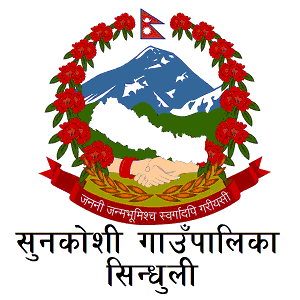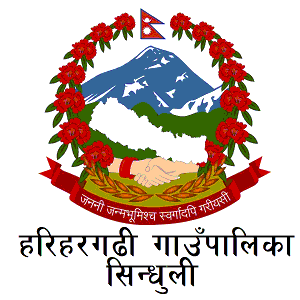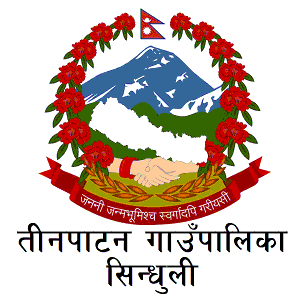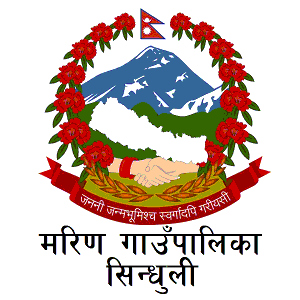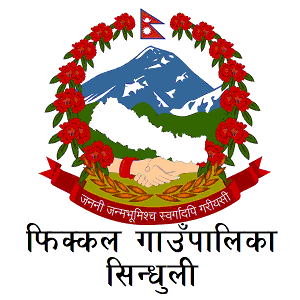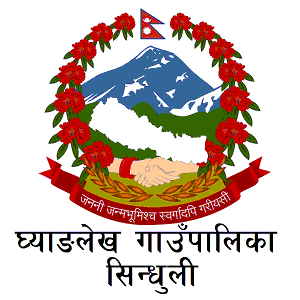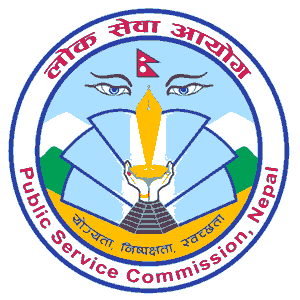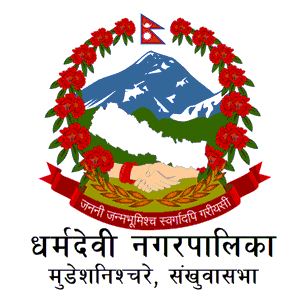Overview
Golanjor Rural Municipality (गोलन्जोर गाउँपालिका, सिन्धुली) formed by the Federal Democratic Republic of Nepal, Bagmati Pradesh, Sindhuli District, Savik Dudbhanjyang, Bitijor Bagaincha, Bhubaneswari, Tinkanya, Ratanchura, Basheshwar, and Bhimeshwar. The decision of 27 (March 10, 2017) has implemented this Golanjor village municipality as a local level like other local levels across the country. The name of this rural municipality has been changed to Golanjor Danda from the name of Golanjor Danda which is located between Vasheshwar, Ratanchura, and Tinkanya. As Golanjor Danda is historical and scenic, it is planned to build a view tower with the sacred objective of developing this place as a tourist destination and helping the people to earn income and livelihood.
According to the National Census, 2068, the total number of families in this rural municipality was 3681 and the total population was 19329, while according to the Household Survey 2075, the number of families is 3811 and the population is 21319. If we look at it this way, compared to 2068 BS, there is an increase of 130 households in the 2075 BS and 1990 population. It is bounded on the east by Phikkal rural municipality and Ramechhap district, on the west by Kamalamai municipality and Sunkoshi rural municipality, on the north by Ramechhap district and on the south by Kamalamai municipality and Tinpatan rural municipality. Currently, the center of this rural municipality is located in Ward No. 3, Gwalior. Potential areas of development within this rural municipality are mainly agriculture, water resources, tourism, natural resources including herbs, etc. Within this rural municipality there are Chhetri, Brahmin, Magar, Newar, Kami, Damai, Sarki, Bhujel, Majhi, Tamang, Sunuwar, Rai, and other castes and tribes.
The Constitution of Nepal 2072 BS has constitutionally recognized each local level as a local government by making clear provision of executive, managerial, and judicial powers at each local level. Part 17 of the constitution provides for local executive and the executive power of the local level in that part shall be vested in the rural municipal executive or municipal executive subject to this constitution and federal law. There is a provision that the executive work will be done in the name of the executive at the same local level. Similarly, the election of the chairperson and vice-chairperson in the rural municipality shall be conducted by the voters within the constituency of the rural municipality according to the electoral system in which one person is elected first by secret ballot. There is an arrangement to have two members elected by the village council from the Dalit or minority community. Article 217 of the constitution provides for a three-member judicial committee to resolve disputes within its jurisdiction under the chairmanship of the rural municipality and the deputy chief of the municipality.
Part 18 of the constitution provides that the administrative power of the local level shall be vested in the village assembly and the municipal assembly subject to this constitution and such administrative power shall be as mentioned in the list as per schedule 8 and schedule 9. There is a provision in the village assembly that there will be a chairperson and vice-chairperson of the village executive, one ward chairperson and four members elected from each ward and members of the village executive elected from Dalits or minorities. Article 218 of the constitution provides for the division of labor and the execution of the work of the executive in accordance with the rules approved by the local level. In Schedule 8 of the Constitution, the list of local level rights includes Municipal Police, Cooperatives, FM Operations, Local Taxes (Property, House Restoration, Real Estate Registration Fees, Vehicles, Service Fees, Customs Tourism, Advertising, Business, Land, Penalties, Fines, Entertainment, Land Revenue Collection), Local Service Management, Local Data and Archive Collection, Local Level Development Projects and Projects, Basic and Secondary Education, Basic Health and Sanitation, Local Market Management, Environmental Protection and Biodiversity, Local Roads, Village Assemblies, Local Court reconciliation and arbitration management, local records management, real estate distribution, agriculture and animal husbandry, management of senior citizens with disabilities, data collection of unemployed, agricultural dissemination, drinking water, small hydropower, alternative energy, disaster management, watershed, wildlife, minerals There is protection and development of language, culture and fine arts. Schedule 9 provides for a common list of rights at the federal, state, and local levels. These include cooperatives, education, sports and newspapers, health, agriculture, electricity, drinking water, irrigation, service charges, fees, penalties and royalties from natural resources, tourism charges, forest, wildlife, water, environment, environment, biodiversity, mining and minerals, Disaster management, social security and poverty alleviation, personal events, births, deaths, marriages and statistics, archeology, ancient monuments and museums, squatter management, vehicles are allowed. Article 232 provides that the relationship between the Union and the local level shall be based on the principles of co-operation, coexistence, and co-ordination. According to the same constitutional provision, this village municipality is also functioning. The village municipality has been carrying out its work in accordance with the laws passed by the federation including the Local Government Operation Act 2074 BS, the laws implemented by the 3rd province, and the division of labor regulations made by the village municipality 2074 BS and the performance regulations 2074 BS.
The main market area of the village municipality is Khaniyakharka and Khurkot via BP Highway, which has led to the flourishing of hotels and businesses along the highway, while all other wards except Ward No. 4 are touched by the Mid-Hills Highway. It is seen that the living standard of the people of this village municipality will gradually improve after the operation of the Mid-Hill Highway. Livestock production still needs to be promoted. The main markets of this village municipality are Khurkot, Gwaltar, and Khaniyakharka. Khurkot is located in Ward No. 1, Gwaltar in Ward No. 3, and Khaniyankhark in Ward No. 6, while the center of the rural municipality is located in Ward No. 3 Gwaltar.
Fertile land for Junar - Golanjor rural municipality:
Golanjor village municipality is considered as the most fertile land of Sindhuli district for Sindhuli Junar farming. Farmers here are eager to pick Junar during the season. Ratanchura, Tinkanya, Dudbhanjyang, Vitijor, and Vaseshwar areas of this rural municipality have been promoted as pocket areas under the superzone in terms of livestock production. In addition to Junar, a large area of the Mahabharata region of Sindhuli district is considered fertile land for the production of oranges, lemons, lemons, and jasmine. The number of farmers selling more than one lakh Junar oranges in the district is more than two thousand. An adult plant produces from one thousand to one thousand five hundred grains. There is a record of up to 6,000 seeds in a single plant in the district. Although the production of Junar is higher than that of grafted seedlings, in terms of quality, the fruit produced from grafted seedlings is considered to be better than the seedlings. According to experts, Junar farming thrives in climates ranging from 700 to 1,200 meters. Most of the products are being used as fresh fruits and fresh juices while only a few percents of the low-quality ones are said to be processed. The Junar has been partially cultivated in all the nine local levels of Sindhuli.
1.1 Golanjor rural municipality has a lot of potential for tourism:
As wards 6 and 7 of this rural municipality are connected with the Sunkoshi river, it is a village municipality with great potential for rafting. The concept of bicycle zone has been extended toward no. 5 while the construction of swimming pools in different wards has been taken forward. Not only this, no one can doubt that Golanjor View Tower attracts tourists. Emphasizing on agriculture and practical education, a plan has been put forward to make the agricultural school in New Kharka an excellent model agricultural school of Sindhuli.
1.2 Nomination:
The name of this rural municipality is Golanjor based on the famous tourist geography of the region. Golanjor Dando is located between Basheshwar, Ratanchura, and Tinkanyako VDCs of Savik and three Savik VDCs Basheshwar, Ratanchura, and Tinkanya can be seen from the top of this hill. This Golanjor hill itself naturally exists as a view tower which is a tourist attraction. There is a lot of potentials to increase the income of the people by developing this area as a tourist area by constructing a view tower on this Golanjor hill.
1.3 Location: (Boundary)
It is bounded on the east by Phikkal rural municipality and Ramechhap district, on the west by Kamalamai Muniicplaity and Sunkoshi rural municipality, on the north by Ramechhap district and on the south by Kamalamai Municipality and Tinpatan rural municipality.
Geographical map of Golanjor Rural Municipality:
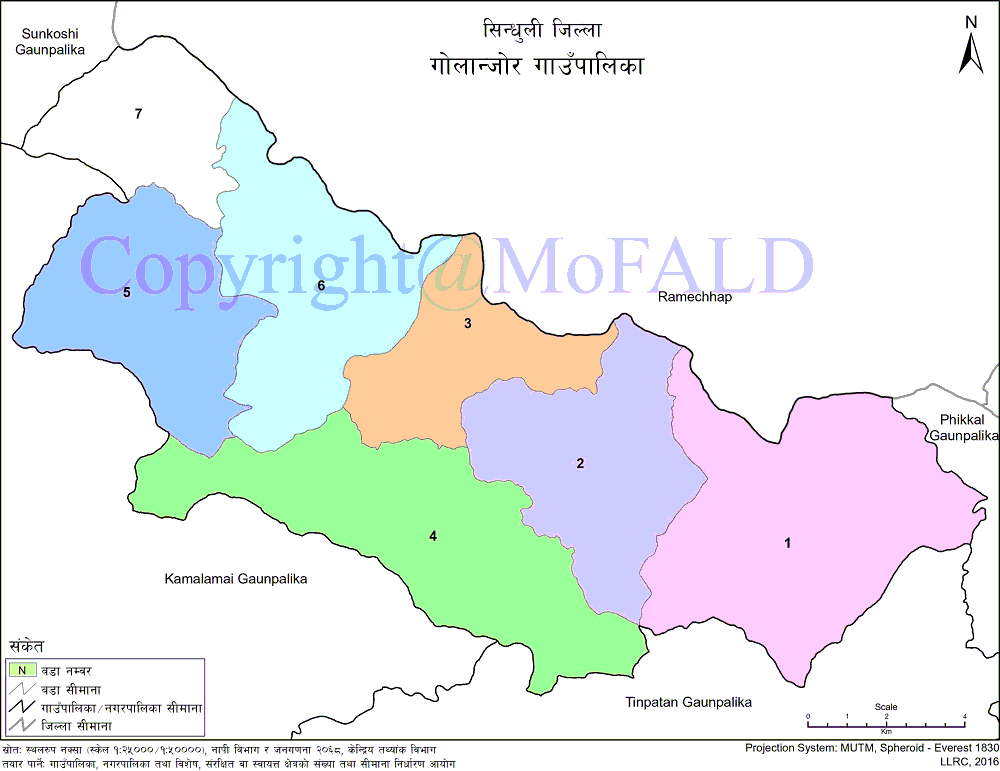
1.4 area
The total area of the Golanjor rural municipality is 184.13 sq. Km. Min. Golanjor rural municipality has been formed by merging Bhimeshwar, Basheshwar, Bhubaneswari, Vitijor, Tinkanya, Ratanchura, and Dudbhanjyangaun Development Committees of Savik, north of the district headquarters of Sindhuli district. It is a rural municipality on the south side of the Sunkoshi river flowing from west to east. Most of the Sindhuli section of the Mid-Hills Pushpalal Highway connecting the hilly areas of Nepal falls within this rural municipality.
1.5 Major cultural festivals and fairs
There is a lot of diversity in the major festivals and fairs celebrated by the people of Golanjor, which is ethnically and culturally diverse. Vijayadashami, Diwali, Ram Navami, Magheskranti, Sauneskranti, Tij, Janapurnima, Buddhapurnima, etc. are the major festivals here.
1.6 Lifestyle and dress
As it is a hilly rural municipality and inhabited by many castes, there is diversity in the way of life. Most of the houses are made of stone, mud, and wood and roofed using wood, straw, and tiles, while some of the houses are made of cement. In terms of costumes, shirts, boots, hats, pants, Furia, belts, cholo, etc. are the major garments.
1.7 Caste, language speaking
Golanjor rural municipality has the highest number of 50 categories when categorized on the basis of caste. It has been found that 79 percent are Janajatis. Similarly Dalit 21. 41 percent Kshatriyas 17.22 percent Brahmins 9. 82 percent and Muslim 0.16 percent and others 0.60 percent, while categorizing on the basis of mother tongue, the highest 85.68 percent Nepali-speaking. Similarly, 9.23 percent of Magar-speaking people are in second place. Similarly, 2.19 percent or Tamang language is in the third place. In fourth place is 1.19 percent, Newari speakers. Similarly, Maithili has 0.68 percent, Gurung has 0.37 percent, Rai has 0.36 percent and Bhojpuri and Tharu have the lowest at 0.02 percent respectively.
1.8 Economic basis
The mainstay of the economic aspect of this Golanjor rural municipality is the agricultural sector and the supporting industries and tourism business. Among the cash crops, Junar, orange, lemon, mango, banana, groundnut, etc. are prominent. In Golanjor rural municipality, 33.36 percent are engaged in agriculture and 4.70 percent are employed. Similarly, 3.49 percent of others and 3.39 percent are in wages, while only 1.43 percent of the population is engaged in trade. However, there is not much business in Golanjor rural municipality.
Population details:
According to the National Census, 2068, the total number of families was 3681 and the total population was 19329 while the population of Golanjor was classified. According to the Household Survey 2075, the number of families was 3811 and the population was 21319. In this way, compared to 2068 BS, the number of households has increased by 130 in 2075 BS and 1990.
Contact Address:
Location: Golanjor Gaupalika, Gwaltar, Sindhuli, Bagmati Pradesh, Nepal
Telephone: +977-47-692025, +977-47-691932
Email: golanjor.rm7@gmail.com
Website: www.golanjormun.gov.np


